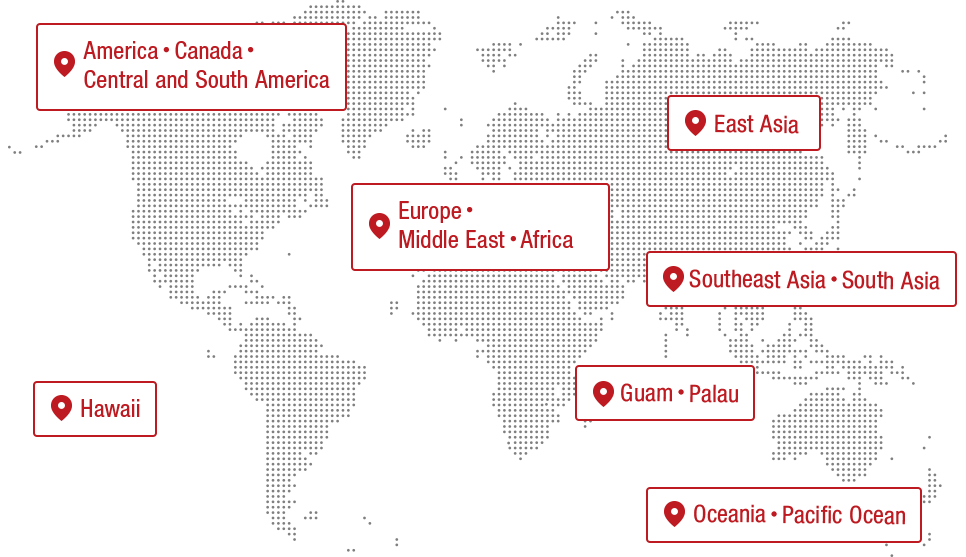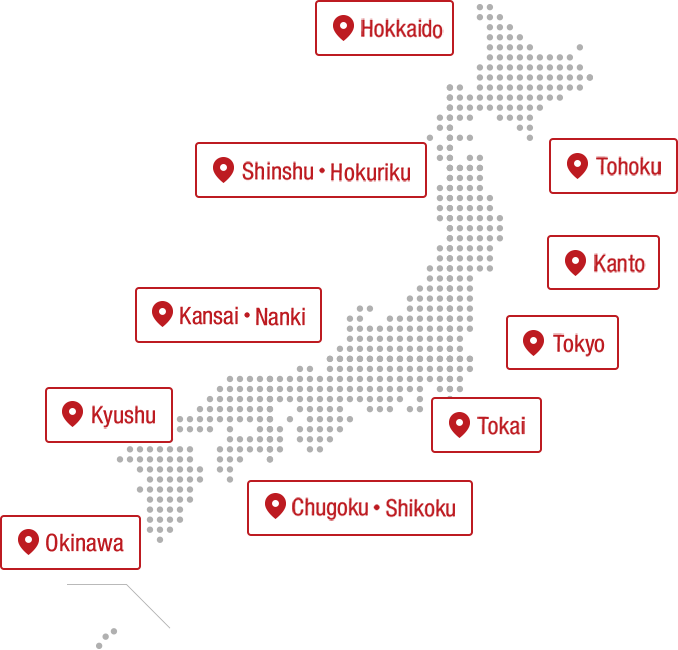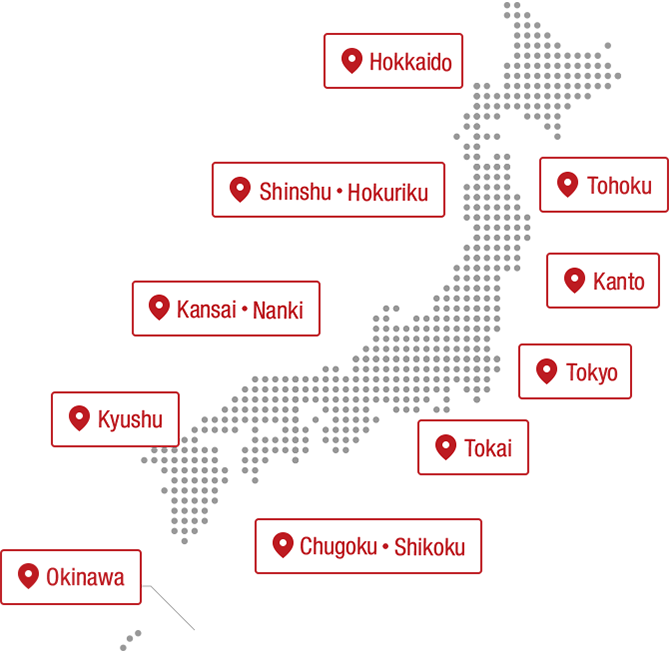Among all kinds of bread, Sakai is especially fascinated by "local bread." For over 10 years, even before the recent bread boom, he has been a "local bread hunter," introducing local breads he comes across while traveling for concerts on social media.
A familiar taste for locals, yet an unknown food for travelers. What is it about local bread that has captivated Sakai so much? We will explore its appeal.

Local bread is the soul food of the people who live there
Sakai first encountered local bread in the early 2000s.
The Gospellers' concert tours take them around the country for several months. After the show, they immediately board a chartered bus to travel, and when they arrive at the hotel, they go to sleep to conserve their energy. When they wake up, they immediately head to the venue, put all their energy into the performance, and then after the show, they head back to the chartered bus... They often have an extremely packed schedule.
Although he can travel to many different places, he doesn't have time to fully enjoy the charms of each place. It was in this situation where he felt dissatisfied that he came across local bread.
When Sakai-san visited a convenience store in Naha City, Okinawa Prefecture, he was greeted by a number of popular products from Okinawan bread factories, such as "Gushiken Pan's Nakayoshi Bread" and "Okiko Pan's Zebra Bread." His eyes were wide open at the sight of uniquely designed breads from manufacturers he had never seen before, side by side with breads from nationally-renowned bread manufacturers.

"I was really surprised to see something like that in a national chain convenience store. It was the first time I'd ever seen local bread. For me it was like, 'What is this?!' I'd never seen anything like it before, but for the people of Okinawa it's a normal, everyday sight."
Bread that is sold in stores such as convenience stores and supermarkets and is easily available in the area, and is a long-selling bread. In other words, bread that has been loved for many years by people of all ages in the local area is what Sakai considers to be "local bread."
"When I post such breads on social media, I get a lot of reactions from people in the areas where the bread is sold, like, 'I've always eaten this bread' or 'If you eat all of that bread, it's going to be really high in calories' (laughs). When people see that it exists, they want to share their own story about it. In other words, it has become soul food for the people who live in that area."
The decisive event that led Sakai to become obsessed with local bread was in 2010. It was his encounter with Iwate's "Fukuda Pan," which sparked the koppepan (bread roll) boom.
"During the tour, we stopped at a supermarket and saw a row of Fukuda Pan products in a corner of the bread shelves, so I posted a photo of it. I then got a flurry of replies like, 'Oh, that's Fukuda Pan! People fight over it at the high school cafeteria,' 'The vendors sell Fukuda Pan at the prefectural high school baseball tournament,' and 'The bean paste butter is insanely delicious!' That was my second shock. I was so envious of the fact that youth and memories were engraved into bread that is only available in that area."
In his life as a member of the Gospellers, he was able to encounter bread that is familiar to the locals - in other words, it was a very moving experience for Sakai to feel close to the lives of the people who live in that area. Above all, he says he is happy to talk to the local people about bread that is only sold there.
The packaging and flavors give a sense of the local history and culture
First of all, why did local bread come about? It is largely due to the fact that, although bread is a processed food, freshness is just as important as perishable food. In order to get fresh bread onto the market, it needs to be produced and distributed locally. In big cities that are the center of logistics, there are factories of national manufacturers, but in rural areas, there are no such factories. That is why unique local brands have survived.
Kariya City, Aichi Prefecture, where Sakai grew up, was home to a factory of a major manufacturer.
"There was a bakery close to the junior high school I went to, and the delicious smell of freshly baked bread would always waft onto the grounds. I think that's what led to my love of bread today, but that bread is sold all over the country, so I never thought of it as 'bread from my town.' But local bread, even though it's completely unknown elsewhere, is deeply rooted in the hearts of locals. If I move to another town, I'll miss it and think, 'I want to eat that bread again!' That's what's romantic about it!"
Sakai suggests that enjoying local bread can be a reason to travel, just like enjoying a region's specialties.
"Local bread makers don't aim to expand nationwide, but rather continue to make bread to please the people of that area, and you can feel the history and culture of the area from the packaging and taste. In other words, you could say that local bread is a culture unique to that area. The best place to enjoy it is locally. Nowadays, there are many bread festivals where bread from all over the country is ordered, but the bread changes slightly during transportation, as it loses moisture. No matter what kind of bread it is, freshly baked bread is much more delicious than people think."
Beloved bread can come back to life
During the Gospellers' tour, Sakai became a "local bread hunter" and started finding various local breads and uploading them to social media. Fans also began to look forward to his reports, wondering, "What kind of bread will Sakai introduce today?"
Twitter: @uzysakai tweet
twitter.com"I also felt like it was my mission to find bread that was unique to each region, or like I was doing an undercover investigation (laughs). Even though it was the day of the concert, I rushed to the supermarket in the morning to find local bread, uploaded it to social media, and ended up being five minutes late for the meeting (laughs). In the process, I also gained more knowledge about local bread."
It's been more than 10 years since Sakai became obsessed with local bread. After all that time, there were times when the bread had to be discontinued. However, with local bread that is deeply rooted in the lives of the local people, miracles can happen.
"When local bread is discontinued, it means the end of a taste that people of all ages and genders have shared, and I think it's also the end of a culture. But beloved bread can be revived. Other companies can take over the recipe, like Ichinobe Bakery's Tamago Pan in Iwate Prefecture, or it can be revived thanks to the passion of local people, like Banderole's Noppo Pan in Shizuoka Prefecture. I think that's something that's unique to local bread, and at the same time, the fact that it's been passed down through the ages makes it more than just a food item."
Going one step further than just tasting: advanced techniques for enjoying local bread
There are various stories behind the creation of local breads. For example, Cream Box, which originated in Koriyama City, Fukushima Prefecture, is a type of bread that has become soul food when local manufacturers and bakeries make the same type of bread, while Roba Pan in Hokkaido is a type that has a business partnership with a national manufacturer.

Cream Box in Koriyama
"The cream boxes in Koriyama and milk breads in Nagano have different bread and cream ingredients depending on the store. You can't say you understand the taste of Sanuki udon in Kagawa just by eating it at one store, right? It's the same thing. If you go around eating cream boxes and think, 'This store and that store are completely different even though they have the same cream box!', you'll be hooked on this world (laughs). If you imagine the regional characteristics of 'why this bread is in this area,' you can enjoy the bread more deeply... I'll secretly teach you an advanced technique (laughs)."
For example, if a bread has the phrase "Loved for 70 years" written on the package, you can guess that it was produced shortly after the end of World War II. Even though the times have changed, it continues to be closely related to our lives with the same taste. In other words, touching local bread is like experiencing the history of the land.
"The taste of local, long-selling breads is different from modern breads or high-end breads, and they may feel rough at times. But when you finish eating them, you realize that this filling and the texture of the bread go well together, and I think that's why they've been loved for so long. Also, the packaging of long-selling products is often adorable. The typefaces, fonts, and designs are all things that wouldn't have been created in the 2020s, so they're also delicious in terms of cultural history. Local breads have something that we don't have now."
There are some breads that you can only get by going to the place where they are made.
Sakai's seven recommended local breads for beginners
Here, Sakai-san introduced us to some recommended local breads.
The selection includes five from the "bread maker" category, which is sold at local convenience stores and supermarkets, and two from the "bakery/cultural area" category, which are independent shops or bakeries in the same region that produce the same products.
"There are many types of bread all over Japan that you can only find in the area, and that you will no longer be able to find in the future. Isn't that a reason to travel?"
As a local bread hunter, I can recommend seven popular yet impactful and unique breads that are perfect for beginners.
Takahashi Confectionery/Vitamin Castella (Hokkaido)
It's not called "Castella" but "Kastella", and even though it's a sweet bread, it's packed with vitamins, which is what makes it so great. It's about the size of a regular financier, and has a distinctive brown color. It's sold at pretty much any convenience store in Hokkaido, so it's a great introduction to local bread hunting. It's usually placed around the border between sweets and bread (lol).
"Vitamin Castella" 108 yen (tax included)
Takeya Bakery/Coffee, Bean Jam Goody (Akita)
The bag of bread just has "Coffee" written on it in large letters, and when you first see it you think "Coffee...?", but when you try it with the dark brown coffee filling in the slits of the bread roll, you'll understand "Ah, this is coffee". It doesn't feel like a coffee sandwich, or like it has a coffee flavor, but rather the unique bitterness of coffee comes to the forefront.

"Coffee" 113 yen (tax included)
The round, matte-textured "Tsubuan Goody" is an anko bread, but it has bean paste and margarine inside, and when you eat it, it tastes like an anko donut. I actually wanted to limit it to coffee, but I'm from Aichi Prefecture, so I love anko butter (lol). As a fan of anko butter, I recommend this bread.
"Bean Jam Goody" 118 yen (tax included)
Shiraishi Pan/Bean Bread Roll (Iwate)
Tohoku has so many local breads that it's impossible to list them all! (laughs) One of the most unique is this "Bean Bread Roll." It's filled with so many large sweet azuki beans that you'll wonder, "Is it really okay to have that much?" It also contains margarine, and the moderate oiliness gives it a great flavor. It's wonderful that such a distinctive bread is available at a convenience store, and it's touching that it is loved in this area.
On the back of the packaging for Shiraishi Bread products, there is a short note written by Shiraishi Boy. Every time I look at it, I learn more and feel like saying, "Thank you, Shiraishi Boy!"

"Bean bread roll" 135 yen (tax included)
Ikeda Pan/Snack Bread (Kagoshima)
This bread is made by spreading margarine on the white part of the bread and rolling it with sponge cake. The bread is the filling of the roll cake! The package also says "Roll bread with sponge cake!" (laughs). I think it would be good if you could think of it as a dessert in which the bread is the main ingredient.
This is a surprising bread that reverses the relationship of master and servant when it comes to sweet bread. Don't you think it's a great idea? If someone is eating jam bread and says, "The jam hasn't come yet," I'd like to give them snack bread and have them say, "The bread hasn't come yet!" (laughs)

"Snack Bread" 140 yen (tax included reference price)
Milk bread (Nagano)
The bread is about the size of a brick and is filled with thick butter cream and milk cream. It's so filling that even members of sports teams can get plenty of calories with this!
Apparently, the recipe for milk bread was proposed by the Nagano Bread Association, and several bakeries started making it at the same time. It became popular at each store, and it became a soul food of Nagano. That's why even among Nagano residents, there are different bakeries that make their favorite milk bread. Because it is a product sold at multiple stores, it is not affected by store closures, and I think it will continue to survive and be loved for a long time to come.

Komatsu Bakery "Milk Bread" 335 yen (tax included)
Komatsu Bakery, which I visited previously, uses milk in the dough and sandwiches its special white cream inside. They often sell out in a flash. To eat Komatsu Bakery's milk bread, I had to get up early to go to the bakery...that kind of trip would be great, wouldn't it?

Komatsu Bakery
| address | : | 4-9-13 Otemachi, Matsumoto City, Nagano Prefecture |
|---|---|---|
| phone | : | 0263-32-0172 |
Hat Bread (Kochi)
This is a type of bread sold by various bakeries in Kochi Prefecture. It is a round bread topped with castella dough and baked to create a brim like a straw hat.

Ringbell "Hat Bread" 155 yen (tax included)
A shop called Ringbell makes hat-sized bread that you can actually wear, and it's very photogenic. If you eat the part you want to wear and make a hole in it, you can actually wear it (lol). If you don't have a hat, why not travel around Kochi and wear bread! (lol)

Rinbell "Big Hat Bread (left)" 2,000 yen (tax included) *Reservation required, right is regular size
Ringbell
| address | : | 1-43 Eikokujicho Heights Eikokuji 1F, Kochi City, Kochi Prefecture |
|---|---|---|
| phone | : | 088-822-0678 |
All of the items introduced this time can be purchased at local convenience stores, supermarkets, airport kiosks, etc. Sakai says he encourages people to try them out while traveling.
"It's fine to buy it as a souvenir to take home, but it tastes best when it's freshly bought locally, and I think savoring it is the most luxurious experience. But there are so many different kinds of local bread, it's hard to eat it all by yourself. If you're worried about calories, I recommend sharing it with a group of people, like a Chinese platter. Eating it while everyone is cheering, 'This is delicious!' is sure to make for a great memory."
Through local bread, Sakai-san taught us that an enjoyable journey begins by delving deeply into one thing. The joy of encountering interesting breads the more he travels, the more his passion is kindled in his heart.
When the situation in the world calms down and it becomes safe to travel again, you might be able to get a glimpse into the lives of the people who live in that area by going on a food tour with a close friend and sharing local bread.

Gospellers Yuji Sakai
He is a member of the Gospellers, a five-member vocal group consisting of Yoichi Kitayama, Kaoru Kurosawa, Yuji Sakai, Tetsuya Murakami, and Yu Yasuoka. They made their major debut on December 21, 1994 with the song "Promise". Since then, they have released many hit songs, including "Towa ni," "Hitori," "Hoshikuzu no Machi," and "Mimosa."
Official site
https://www.gospellers.tv/
Text: Sayako Oki
The contents published are accurate at the time of publication and are subject to change.















